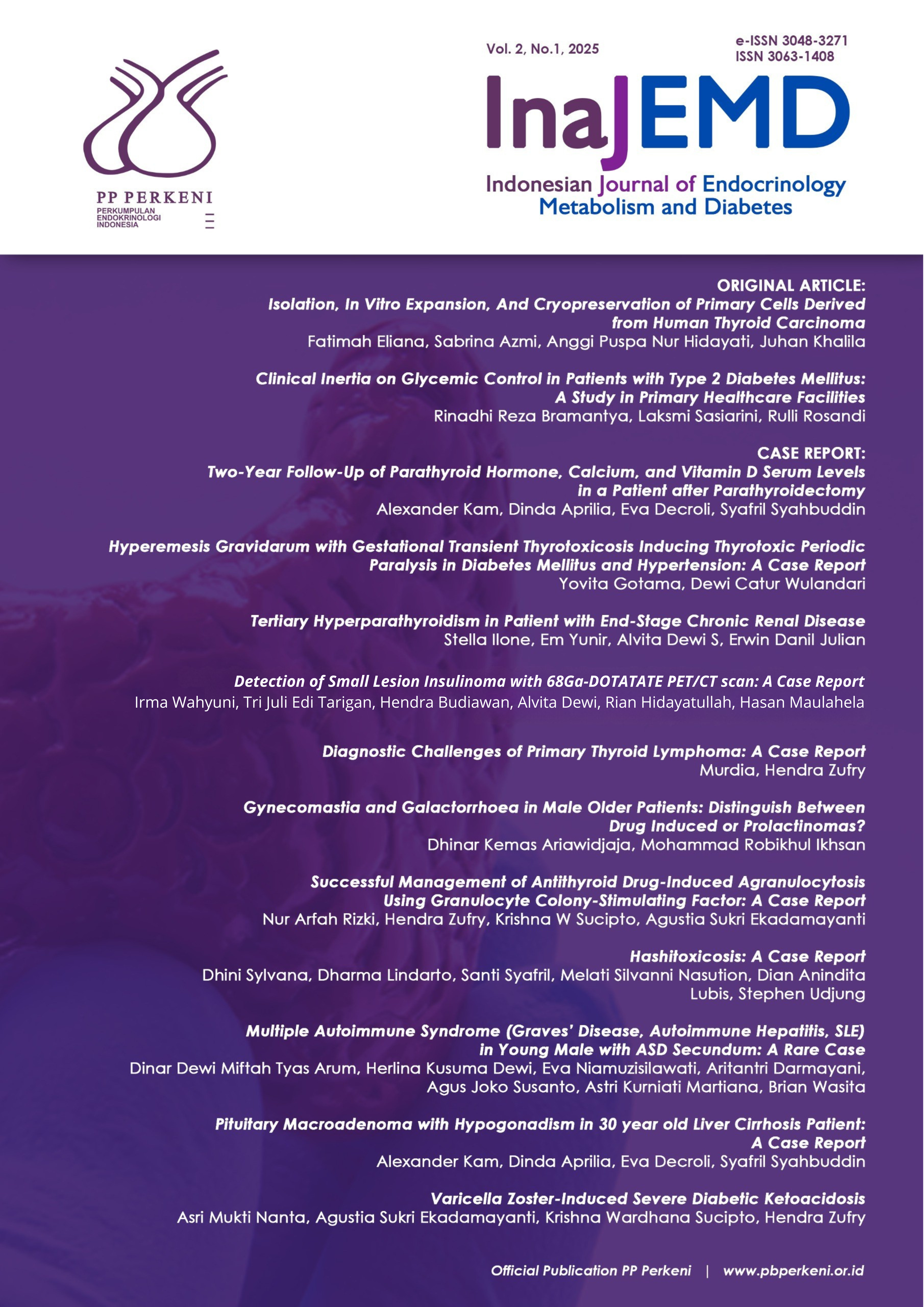Detection of Small Lesion Insulinoma with 68Ga-DOTATATE PET/CT scan: A Case Report
Keywords:
hypoglycemia, insulinoma, 68Ga-DOTATATE PET, CT scanAbstract
Endogenous hyperinsulinism is a rare condition characterized by inappropriate insulin secretion, with insulinoma accounting for approximately 55% of cases. A 36-year-old woman presented with recurrent hypoglycemic episodes for 4.5 years, particularly in the morning, relieved by glucose intake. Laboratory findings during a supervised fasting test revealed a blood glucose of 44 mg/dL, elevated insulin (15 μIU/mL), C-peptide (2.27 ng/mL), proinsulin (53.1 pmol/L), and suppressed beta-hydroxybutyrate (0.1 mmol/L), indicating endogenous hyperinsulinemia. Initial imaging modalities including CT, MRI, and EUS failed to localize the lesion. The patient discontinued investigation but resumed a year later with nuclear imaging studies. A 99mTc-HYNIC-TOC scan was inconclusive, but subsequent ^68Ga-DOTATATE PET/CT at Hasan Sadikin Hospital revealed a somatostatin receptor-expressing nodule at the pancreatic head, consistent with insulinoma. Given the lesion's location and imaging findings, treatment options were discussed, including Whipple’s procedure versus radiofrequency ablation. Insulinomas are typically small, with 80% under 2 cm and 40% under 1 cm, often making localization challenging. While CT and MRI have detection rates of 70% and 86% respectively, the combination of CT and EUS may reach 100% sensitivity. In cases where conventional imaging is inconclusive, ^68Ga-DOTATATE PET/CT provides a valuable alternative, capable of detecting neuroendocrine tumors as small as 6 mm. This case highlights the critical role of nuclear medicine in localizing elusive insulinomas and guiding definitive treatment.
Downloads
Downloads
Published
Issue
Section
License
Copyright (c) 2025 Journal

This work is licensed under a Creative Commons Attribution-NonCommercial-NoDerivatives 4.0 International License.
Authors retain copyright and grant the Indonesian Journal of Endocrinology, Metabolism and Diabetes (InaJEMD) the right of first publication with the work simultaneously licensed under a Creative Commons Attribution-NonCommercial-NoDerivatives 4.0 International License (CC BY-NC-ND 4.0) that allows others to share the work with an acknowledgement of the work's authorship and initial publication in this journal.
© Indonesian Journal of Endocrinology, Metabolism and Diabetes (InaJEMD). Published by the Indonesian Society of Endocrinology (PERKENI).





